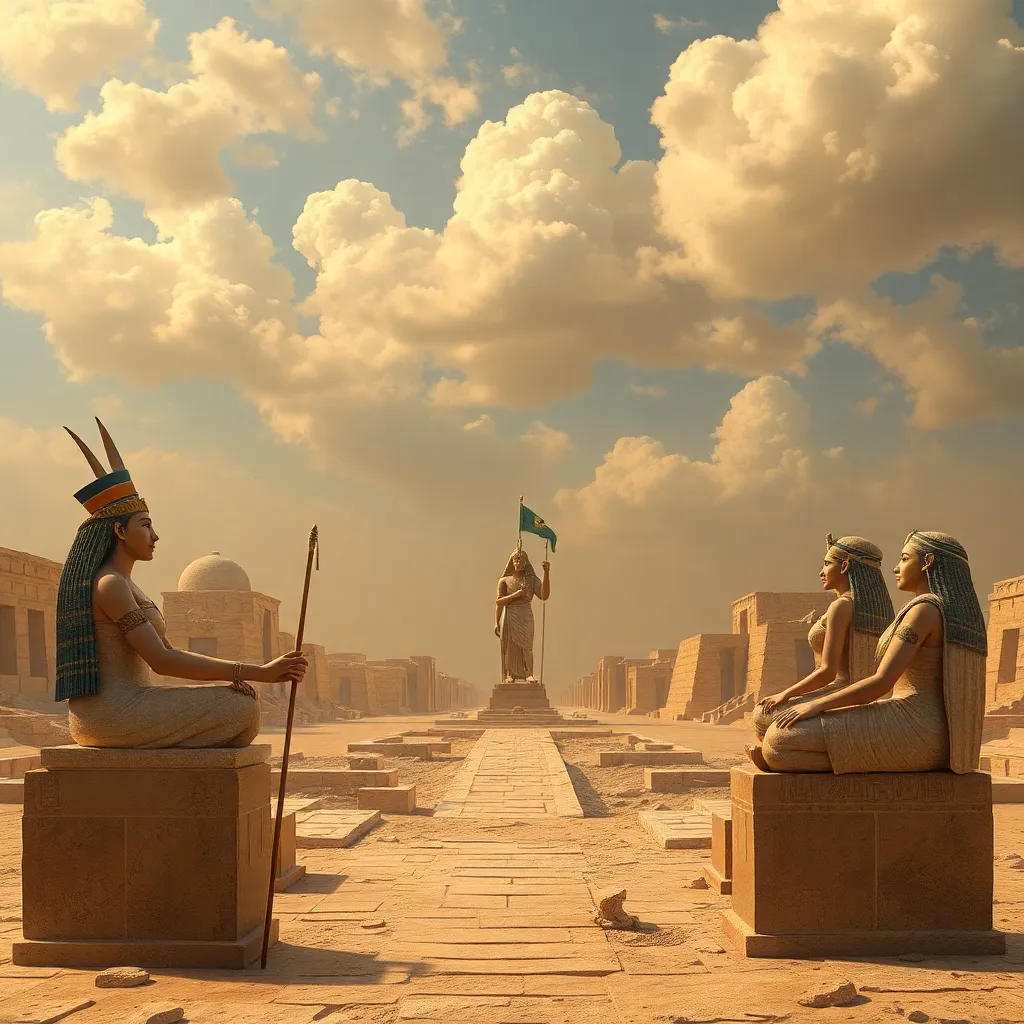The Artistic Legacy of Atenism: A New Era in Egyptian Art
Introduction to Atenism and Its Historical Context
Atenism emerged as a radical religious and artistic movement during the reign of Pharaoh Akhenaten (circa 1353-1336 BCE). This period, known as the Amarna Period, marked a significant deviation from traditional Egyptian beliefs and practices. Akhenaten, along with his wife Nefertiti, championed the worship of the Aten, the sun disk, as the singular deity, thereby initiating a shift from the polytheistic practices that had dominated Egyptian religion for centuries.
The socio-political landscape of ancient Egypt during this time was characterized by both internal and external challenges. Akhenaten’s reforms aimed to consolidate power and promote a new religious ideology that would ultimately redefine Egyptian culture. The Amarna Period is not only notable for its religious transformations but also for its artistic innovations, making it a pivotal era in ancient Egyptian history.
Philosophical Foundations of Atenism
The philosophical basis of Atenism lies in its stark departure from the polytheistic traditions of ancient Egypt. The Aten was portrayed as the sole creator and sustainer of life, representing a more universal and abstract concept of divinity. This shift to monotheism was revolutionary, as it diminished the roles of other gods and centralized worship around a single entity.
The significance of the Aten as a deity is profound; it symbolized light, life, and the nurturing aspects of nature. Atenism influenced not only religious practices but also permeated the art and culture of the time, leading to a unique fusion of spirituality and creativity that would characterize the Amarna Period.
Characteristics of Atenist Art
Atenist art is distinguished by its departure from the rigid conventions of traditional Egyptian art. Key characteristics include:
- Realism and Naturalism: Unlike the idealized forms of earlier Egyptian art, Atenist art embraced a more realistic portrayal of the human figure, emphasizing naturalistic proportions and gestures.
- Unique Iconography: The representation of the Aten often involved rays of sunlight extending towards the figures, symbolizing the deity’s life-giving power.
- Emotional Expression: Art from this period conveys a sense of intimacy and emotional depth, particularly in depictions of familial relationships.
Innovations in Sculpture and Reliefs
The Amarna Period saw remarkable innovations in sculpture and reliefs. Notable examples include:
- The Bust of Nefertiti: This iconic sculpture exemplifies the beauty and individuality celebrated in Atenist art.
- Akhenaten’s Statues: Sculptures of Akhenaten often depicted him with exaggerated features, emphasizing his divine status and unique role as the sole pharaoh.
Artists of this era utilized advanced techniques and materials, including limestone, sandstone, and plaster, to create intricate reliefs that showcased their skill. The attention to detail and the use of light and shadow marked a significant evolution from the flat, stylized forms of earlier Egyptian art.
Atenism’s Impact on Architecture
Atenism also had a profound impact on architecture, most notably with the construction of Akhetaten, modern-day Amarna. This city was designed as a religious center dedicated to the Aten and reflected the new beliefs of the time. Key architectural features include:
- Open-air temples: Unlike previous temples that were enclosed and dark, Atenist temples were designed to allow natural light to flood in, symbolizing the presence of the Aten.
- Innovative layouts: The urban planning of Akhetaten included spacious courtyards and gardens, emphasizing a connection to nature and the divine.
The role of temples and monuments in Atenist worship was crucial, serving as physical manifestations of the new religious ideology and fostering communal worship centered around the sun.
The Role of Women in Atenist Art
Women, particularly royal figures like Nefertiti, played a significant role in Atenist art. Their representation was often more prominent and nuanced compared to previous periods. Characteristics include:
- Empowerment: Nefertiti is depicted as an equal partner to Akhenaten, showcasing a shift in gender dynamics and the status of women in society.
- Familial Relationships: Art from this period often illustrates tender moments between family members, highlighting the importance of love and connection.
This focus on women and familial bonds reflects broader societal shifts during the Amarna Period, presenting a more inclusive view of life and spirituality.
Atenism’s Influence on Subsequent Egyptian Art
After the reign of Akhenaten, the artistic innovations of Atenism continued to resonate throughout Egyptian art. Some notable influences include:
- Continuities and Changes: While some aspects of Atenist art were abandoned, the emphasis on realism and emotional expression persisted in later works.
- Revival of Traditional Themes: Following Akhenaten’s death, there was a return to traditional themes and techniques, but with subtle influences from the Amarna style.
The long-term effects of Atenism on Egyptian art and culture are evident in the subsequent dynasties, as artists continued to explore the balance between tradition and innovation.
Conclusion: The Enduring Legacy of Atenism
The contributions of Atenism to art and culture are immense, marking a transformative period in ancient Egyptian history. The Amarna Period’s artistic innovations, philosophical shifts, and unique representations of gender and family have left a lasting impact on subsequent generations.
In contemporary discussions of art and spirituality, Atenism remains relevant as a symbol of the power of creativity and belief. Its legacy serves as a reminder of the complex interplay between religion, art, and society, inspiring modern artists to explore similar themes of individuality, connection, and the divine.




